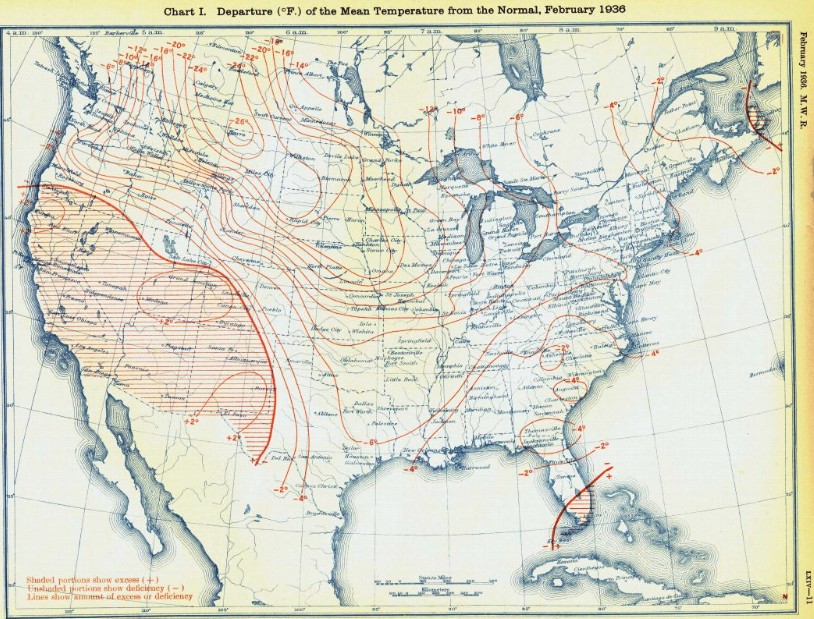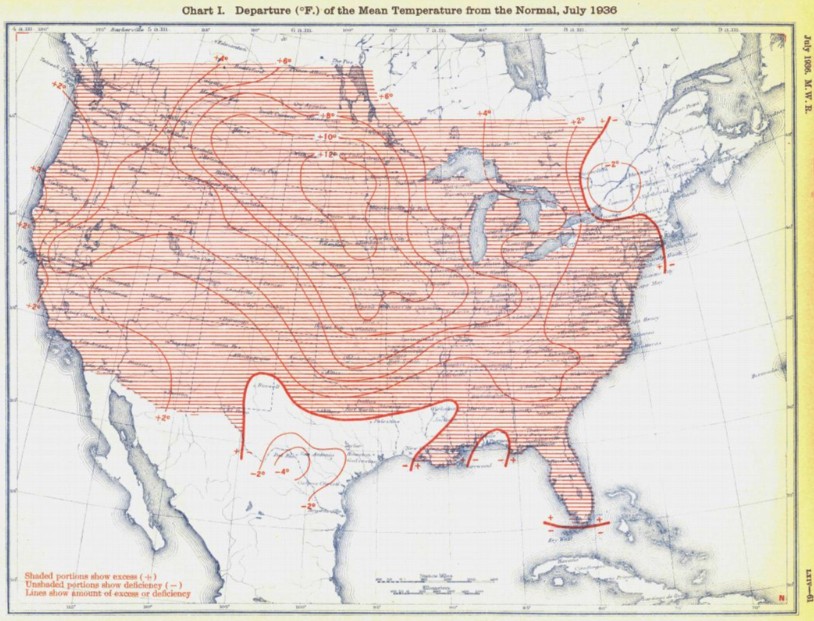Paul Homewood brought this to our attention yesterday – NOAA’s climate extreme index is a complete fraud.
They show that temperature extremes were very rare during the 1930s, and very common now.
In fact, it is the exact opposite. The graph below plots the number of all-time daily temperature records set or tied at all USHCN stations which have been continuously active since at least 1920. It is almost exactly the opposite of NOAA’s claims.
Temperature-wise, 1936 was by far the most extreme year in US history – and NOAA shows it as being one of the least extreme. Unbelievable.
February, 1936 was the coldest month in US history, and July 1936 was second hottest month in US history – after July, 1901.
docs.lib.noaa.gov/rescue/mwr/064/mwr-064-02-c1.pdf
docs.lib.noaa.gov/rescue/mwr/064/mwr-064-07-c1.pdf
Either NOAA knows nothing about US climate history, or they are intentionally deceiving the public.







If you open up a new station, every day will set both a high and low temperature record. If you have lots of recent stations, naturally you are gong to set many more records. Also avoid extreme periods, like the extreme cold during the 1970’s and extreme heat (and cold) during the 1930’s. They have a lot of nerve trying to put that one over on ignorant people. It also shatters any semblance of objectivity or credibility.
Their index degenerates into farce. A mild pleasant winter gets defined as an ‘extreme weather event’. I have not looked closely but I am also wondering if a very cold winter gets classified as an extreme weather event. If so, evidence against AGW could be classified as proof of AGW.
Well stated, Will.
Extremity should be objectively defined as any average exceeding 2 standard deviations from the mean. However, some extremes should only be defined on one side of the mean. For example, crop yields 2 standard deviations above the mean, are not a bad thing.
All chaotic systems have noisy extrema. Noise proves nothing.
Either NOAA knows nothing about US climate history, or they are intentionally deceiving the public.
IMO NOAA knows exactly which side their (political) bread is buttered, hence the untruths and mis-directions.
Please don’t confuse me with the facts.